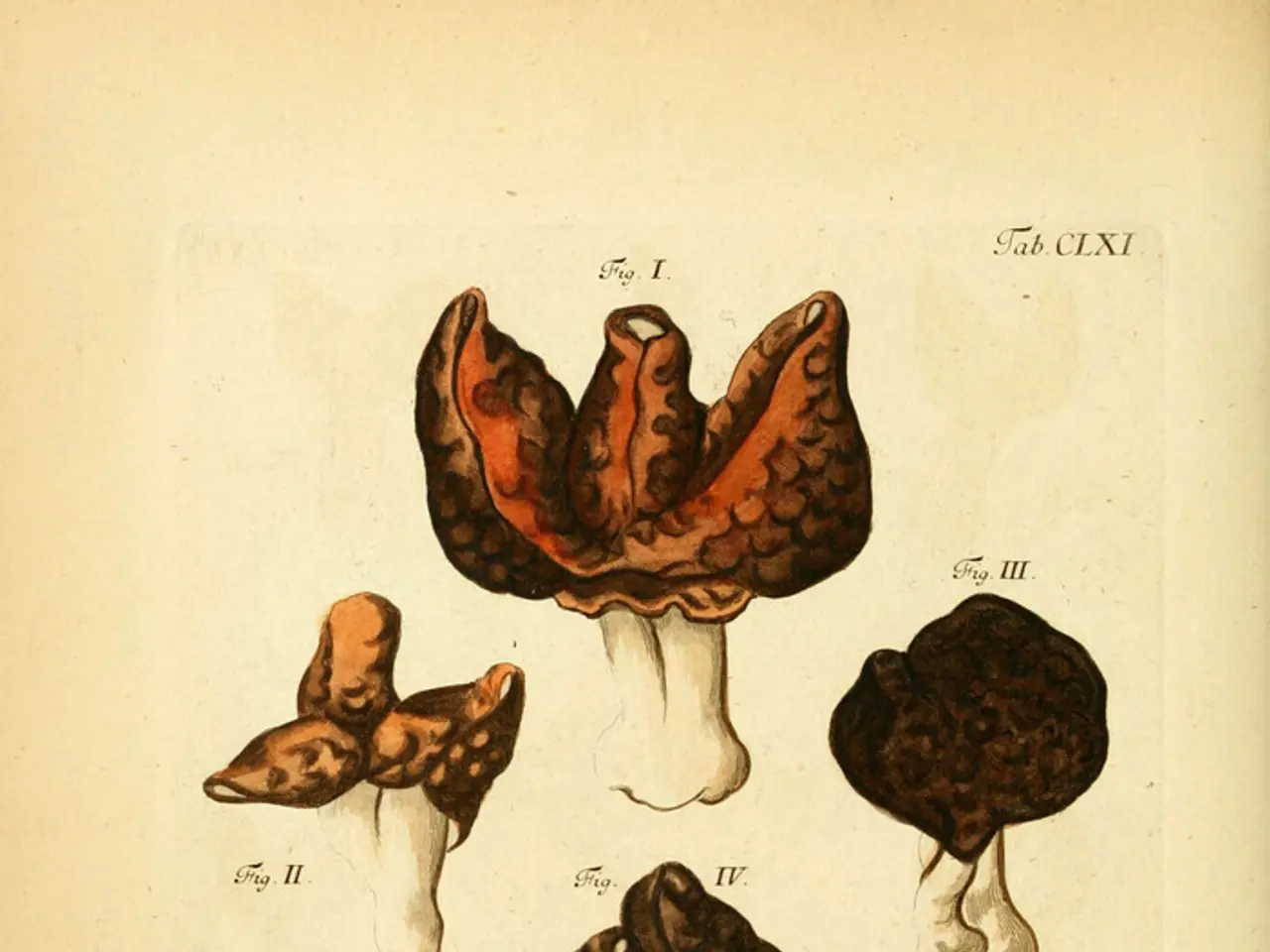Deadly Deception: The Appealing Fungi That Could Be Your Final Meal
In the lush woodlands and meadows of the United Kingdom, a hidden danger lurks - the deadliest mushrooms that can cause severe illness or even death. Here's a guide to some of the most dangerous fungi found in the UK, their distinctive characteristics, and the importance of identification.
The death cap (Amanita phalloides) is the most toxic mushroom, responsible for most fatal mushroom poisonings worldwide. Its smooth, pale greenish or yellowish cap, white gills, white stalk with a cup-like volva at the base, and a ring on the stem make it look like an ordinary mushroom. However, it contains deadly amatoxins, particularly alpha-amanitin, that cause liver and kidney failure. Symptoms begin with gastrointestinal distress followed by severe organ failure.
The deadly webcap (Cortinarius rubellus) and its close relative, the fool's webcap (Cortinarius orellanus), belong to the webcap group of fungi and are characterized by rusty brown spores and a cobweb-like partial veil on the stem. These mushrooms contain orellanine toxin, causing severe kidney damage that can be delayed in onset.
The fly agaric (Amanita muscaria) is recognizable by its bright red to orange cap with white warts, white gills, and a ring on the stem. It is both hallucinogenic and poisonous, containing muscarine, muscimol, and other toxins causing nausea, vomiting, respiratory difficulties, and neurological symptoms. Death is rare, but poisoning is common.
Another dangerous mushroom is the brown rollrim (Paxillus involutus), a common woodland mushroom with a grubby brown, slimy, shallow funnel-shaped cap with grooved edges. It causes autoimmune haemolytic anaemia—a catastrophic destruction of red blood cells—due to a toxic antigen buildup with repeated consumption, which has led to deaths.
While these mushrooms pose serious health risks, it's important to note that identification relies on features like cap color and texture, presence of warts, ring and volva on the stalk, and spore color. Extreme caution is advised because some deadly species look deceptively like edible mushrooms.
For example, the angel wings, resembling oyster mushrooms, have caused poisonings and deaths, particularly in Japan. Similarly, the dapperlings, resembling edible parasols, contain the same toxin as the death cap and can be dangerous to consume. The yellow stainers are not edible mushrooms, but are the most common cause of mushroom poisoning in the UK.
It's also worth mentioning the deadly false morel, whose Latin name is Gyromitra esculenta, but it is not edible without special preparation. Eating a plate of cooked brown rollrims may not cause immediate poisoning, but consuming them over months or years could lead to 'autoimmune haemolytic anaemia'.
The number of British fungi that can be deadly is mercifully small. However, it's crucial to remember that precise identification of foraged mushrooms is crucial to avoid poisoning. The best outcome of a mushroom hunt is a lovely day out with friends and family and a nice meal in the evening. The worst outcome is a lovely day out, a meal that may or may not be nice, and a potentially fatal poisoning.
Modern medical treatments have significantly reduced the number of deaths from mushroom poisoning. For instance, deaths from the deadly webcap and the fool's webcap are infrequent, but they can still cause kidney failure. Similarly, the destroying angel, a strikingly statuesque and pure white mushroom, is deadly but deaths are rare with modern treatments.
In conclusion, the death cap and deadly/fool's webcaps are the deadliest due to their liver and kidney toxins, while fly agaric and brown rollrim pose serious health risks. Identification relies on features like cap color and texture, presence of warts, ring and volva on the stalk, and spore color. Extreme caution is advised because some deadly species look deceptively like edible mushrooms.
- In the realm of health-and-wellness, understanding the distinctive characteristics of dangerous mushrooms like the death cap, deadly webcap, fool's webcap, fly agaric, brown rollrim, angel wings, dapperlings, and deadly false morel is crucial for maintaining a lifestyle that prioritizes food-and-drink safety, particularly when foraging in the UK's woodlands and meadows.
- To reduce the risk of mushroom poisoning, it's essential to ensure precise identification of foraged mushrooms based on their cap color and texture, presence of warts, ring and volva on the stalk, and spore color. This knowledge can help in enjoying a safe food-and-drink experience while appreciating the wonders of science and nature.




